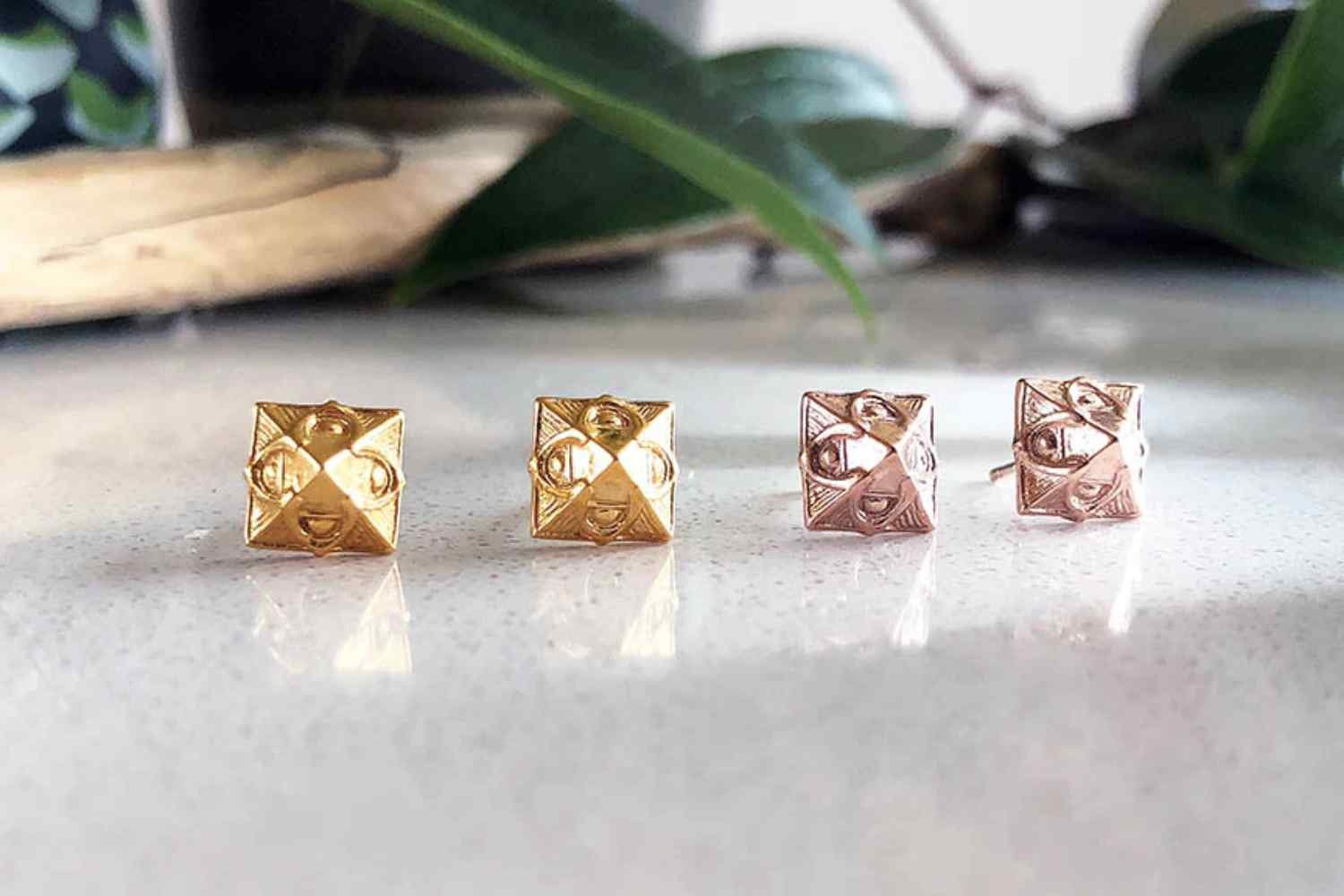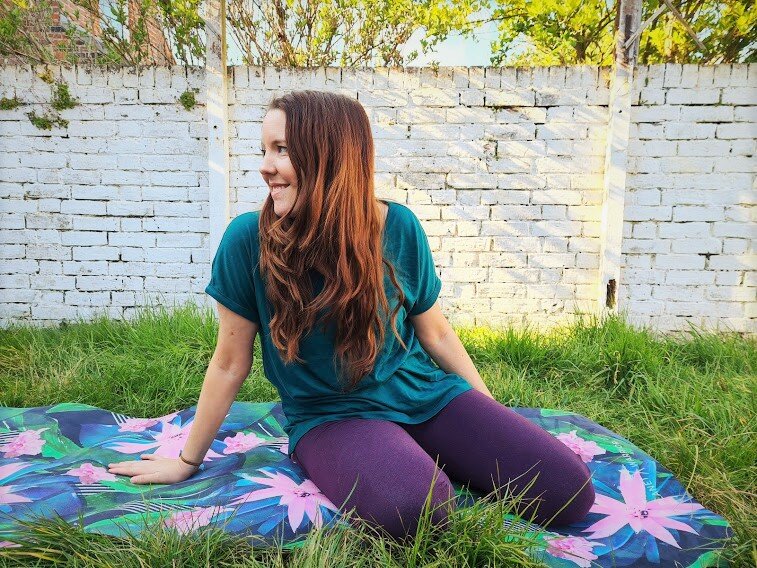Frequently Asked Questions About The Uyghur Genocide & Fashion
Fast fashion is cheap for a reason.
Dozens of well-known brands have been linked to the Uyghur genocide.
I know, I know… it’s almost not surprising at this point.
If you’re into sustainable living, you need to care about human rights too. Social justice and environmental issues go hand in hand because of the nature of our supply chains.
If you don’t know much about what is happening in China, this whole post will be helpful. If you just want to know how to help, skip ahead to the end of the post.
The Uyghur genocide can be quite overwhelming so I’ve tried to keep it simple.
I’m not a journalist or an expert in politics so I’ve linked my sources throughout the text.
mental health & social justice
It is difficult to hear that abuse and slavery are still happening in the world. It is uncomfortable learning that our clothes, food, technology and beauty products are all connected to human rights injustices.
This work cannot be ignored but you should also set yourself boundaries to take care of your mental health.
Plan regular breaks
Do something fun and relaxing afterwards
Turn off your phone
Get outside in nature
Don’t let it take over your life. Balance is important.
FAQ about the Uyghur genocide and fashion
In this post:
What is happening in China?
Who has been detained?
How do you pronounce Uyghur?
Who are the Uyghurs?
Where is this happening?
How many camps are there?
Who is in charge?
How are they controlling the region (outside the camps)?
Why are they detaining the Uyghurs?
What is happening inside the camps?
How do we know genocide is happening?
Can I read stories from real people?
What caused this to happen?
What is China’s response?
How is fashion complicit in the Uyghur genocide?
What can you do?
1. What is happening in China?
There is evidence that close to 3 million people are being held against their will in detention camps, prisons and forced labour factories (Source). It is the largest imprisonment of a religious group since WW2.
Human rights watch 2018 report
2. Who has been detained?
The people imprisoned in the camps are Uyghurs (also spelt Uighurs), an ethnic minority in China.
There are also other minority groups being detained, including Kazakhs and Uzbeks.
3. How do you pronounce Uyghur?
Uyghur is pronounced wee-gur.
4. Who are the Uyghurs?
They are an ethnic minority living in a region of China called Xinjiang (pronounced shin-jyang). Most Uyghurs are Muslim and they speak their own language similar to Turkish.
5. Where is this happening?
Xinjiang is the largest region in China with 12 million Uyghurs living there. It is massive!
Uyghurs used to be the majority but they now make up less than half the population in the region since many Han Chinese have moved there in recent decades (Han are the ethnic majority - 92% of China’s population are Han).
Xinjiang is a vast desert area that supplies a fifth of the world’s cotton and is rich in oil and gas. It located in the North West of China and is an important trade link.
The detention camps are also in Xinjiang.
6. How many camps are there?
As of 2020, there were 380 camps identified and more than a dozen under construction. They range in size and security, from reeducation centres to highly fortified prisons. A new internment camp was built in January 2021 and has thirteen five-story buildings and a fourteen-meter wall around it with watchtowers.
The largest documented camp at this time has 100 buildings.
7. Who is in Charge?
The Chinese government.
8. How is the Chinese government controlling the region?
The government have a high tech surveillance network in Xinjiang so the people who aren’t in the internment camps do not have freedom. My research found the following measures in place:
Checkpoints with police
Lots of high tech security cameras that have facial recognition.
A mobile app to monitor people’s behaviour, such as how often they open their front door and how much electricity they are using (Human Rights Watch). If they are caught without the app they get detained.
Han Chinese officials living in the homes of Uyghurs to monitor behaviour.
Banning religious and cultural traditions, like fasting for Ramadan, wearing a hijab, or owning a Qur’an.
Forcing women to have an IUD (contraception) fitted and forcibly sterilising them in an effort to control the Uyghur population (Source)
9. Why are the government detaining them?
Amnesty International said, "the detentions appear to be part of an effort by the Chinese government to wipe out religious beliefs and aspects of cultural identity to enforce political loyalty."
The Chinese government deny this and are calling them "vocational training centres" with the goal of preventing terrorism.
Leaked documents and people that have escaped say otherwise.
10. What is happening inside the camps?
~ trigger warning: distressing content ~
Uyghurs are being detained despite never committing a crime. Inside the camps, the Muslims are forced to renounce their faith and pledge allegiance to the Chinese state. They are physically and psychologically tortured until they comply.
Masked men remove women from their cells to sexually assault them each night. They get gang-raped and electrocuted by guards and police. Money is exchanged so they can choose women they like the look of (source).
Some women get their hair shaved off so it can be sold as weaves and wigs (source).
Separated from their detained parents, children get sent away to orphanages to be brainwashed and reeducated. There are so many of them they are living in cramped conditions (source)
9 million Uyghurs are unaccounted for. Relatives in neighbouring countries have no idea if their family are alive, even people who were temporarily visiting the region.
11. How do we know this is happening?
China is not allowing people access to the internment camps. The information has been gathered by satellites, leaked Chinese government documents and survivors fleeing the area.
View the leaked documents here.
View secret footage released here
12. Where can I read people’s experiences?
A man who was detained shares his experience in the prisons - NPR news
A father in the US separated from his wife and his six-year-old daughter who have been separated - Atlantic
A teacher shares her experience of being sterilised - Guardian
A woman describes her experience of being imprisoned (TW - rape and torture) - BBC
Multiple stories from relatives of missing people and others facing psychological abuse and re-education - Guardian
13. What caused this to happen?
There is a long history of tension between the Chinese government and Uighur Muslims. Uighurs wanted to be an independent state in 1949 but China quickly took control back.
Activists say the government has gradually been restricting Uyghur culture and traditions over the last 50 years. Peaceful protesting and activism are forbidden. Over the last decade, episodes of violence and riots have increased as people stand up against cultural repression.
In 2014, the government banned Muslim officials from participating in Ramadan.
In 2017, President Xi Jinping declared all religions in China should be Chinese in orientation and their security network took over the region.
14. What is China’s response?
Chinese officials deny they are sterilising women or forcing people to work against their will. They say their security and vocational centres are there to root out Islamic extremism. They claim Uighur militants are plotting acts of terrorism.
Chinese officials have also said people are graduating from the camps and things are “winding down” however there is no proof of this.
15. How is fashion complicit in the Uyghur genocide?
Fashion brands are complicit in genocide because the products they sell can be traced back to factories and fields using forced labour. They are profiting from exploitation and slavery and must actively take steps to find a solution.
Cotton
China is the biggest exporter of cotton in the world and 80% of Chinese cotton is grown in Xinjiang. Yarn from the Uyghur region is exported to Bangladesh, Vietnam and other countries where clothing is made.
Globally, 1 in 5 cotton items can be traced back to the internment camps, which means many high street brands and supermarkets are profiting from genocide.
Cotton farming is dangerous work that requires more pesticides than any other crop.
Textile factories
A report estimates that more than 80,000 Uyghurs were transferred from the internment camps to work in factories across China that strongly suggest forced labour. These factories are in the supply chains of at least 83 well-known brands, including high street fashion.
Outside of working hours, the ethnic minorities are under constant surveillance, forced to learn Mandarin and continue their ideological training.
A Kazakh woman who was moved from the internment camp to a textile factory said that working there was no different from being imprisoned. She was not allowed to go anywhere and there were cameras and security guards everywhere.
The report only accounts for 2017 - 2019 so the figure is possibly much higher now.
Removing Uyghurs from the region they live in, separating them and stripping them of their freedoms appears to be the next stage of the Chinese government’s plan for cultural genocide.
Fashion & transparency
It's not easy to figure out if fashion brands have forced labour in their supply chain because the majority refuse to disclose who made their clothes.
H&M were the first fast fashion brand to share their whole supply chain in 2013 - over one thousand factories.
H&M were linked to the Uyghur's forced labour because they disclosed their factories. Although H&M are not a sustainable brand and still have a lot of work to do, being honest about their factories makes it easier to identify and fix problems when they arise.
Some of the other brands linked to Uyghur forced labour factories are:
•Zara
•Nike
•Adidas
•Abercrombie & Fitch
•Uniqlo
•Amazon
•Ralph Lauren
• Calvin Klein
•Victoria's Secret
•Tommy Hilfiger
It is important all clothing brands sign the call to action (see next section) and commit to not sourcing cotton from Xinjiang.
They all need to put time and resources into untangling their supply chain so they can ensure the safety of their garment workers.
16. What can you do?
Call to action
The coalition has created a call to action for brands to sign. It is a commitment to stop sourcing cotton from Xinjiang and to prevent Uyghurs and other Muslim groups from being exploited in their supply chain.
Corporations respond to negative publicity so emailing them and contacting them on social media to encourage them to sign the call to action is the first step you can do.
Send an email to your MP
Here is a pre-written template asking your MP to write a letter to the foreign secretary. All you have to do is fill in the orange form.
If you have time, use these tips to write your own email to your MP.
Another idea is to write to your MP to demand no trade deals with genocidal states.
Sign petitions
You can search for up to date petitions. Here are a couple of current ones in the UK:
Petition - Tell Zara to stop profiting from Uyghur forced labour
Petition - Work with other nations to pressure China over their treatment of Uighur Muslims
Raise awareness
You can stand up for the Uyghur and other ethnic minorities by using your voice.
Tell your family and friends
Share news articles
Share statistics
Use the hashtags
I hope I’ve answered all your questions. If you found this useful please give this post a share so we can spread the word.
I’d love to hear your thoughts in the comments.













